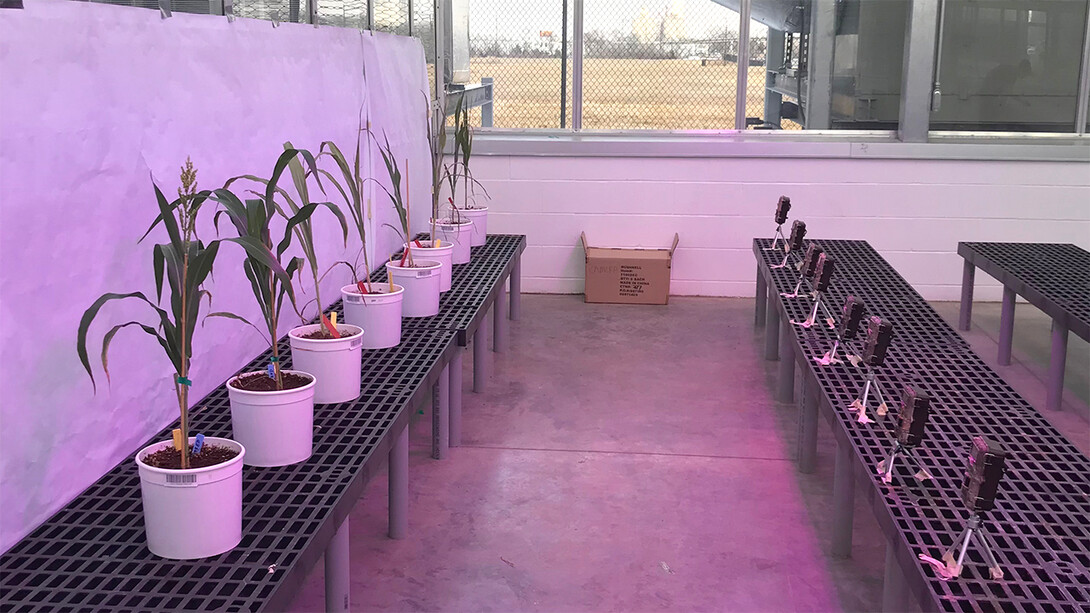
Welcome to Pocket Science: a glimpse at recent research from Husker scientists and engineers. For those who want to quickly learn the “What,” “So what” and “Now what” of Husker research.

What?
Sunlight allows crops to engage photosynthesis and produce the yields that become food, feed, fiber and fuel.
That light gets captured by leaves. More upright leaves allow plants to use light more efficiently while casting less shade on neighbors, allowing growers to fit more plants into a field. Leaf angles also change when crops are deprived of water, making them a useful telltale for comparing how genetic lines respond to drought.
Unfortunately, measuring leaf angles is labor-intensive and time-consuming. Though automated systems exist, most work best in chambers that fail to mimic field conditions.
So what?
Nebraska’s James Schnable and colleagues developed an image-processing framework, Leaf Angle eXtractor, that quantifies leaf angles from time-lapse photography of plants. Experiments with corn and sorghum plants showed that Leaf Angle eXtractor could discern minute-to-minute shifts in individual leaves — even from medium-resolution photos — that corresponded with rolling, wilting and other common signs of water deprivation.
Now what?
The framework could accelerate and reduce the cost of comparing how genetic lines respond to water stress in greenhouses, along with which varieties of corn and sorghum boast desirable leaf angles. Refining its ability to distinguish among individual plants under field conditions will rank as a future goal, the team said.








